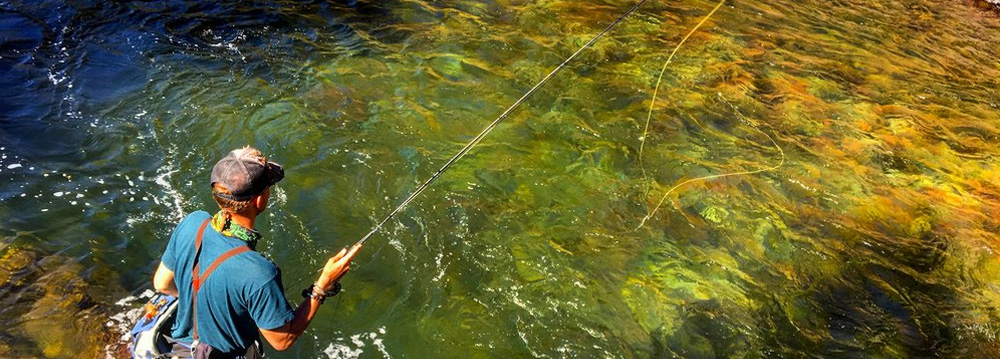
Aspen fly fishing season is here!
Get ready to cast your line into the pristine waters of Aspen, where fly fishing reaches its peak during the spring and summer seasons.
With miles of open rivers and a thriving ecosystem, the Roaring Fork Valley stands as Colorado’s ultimate destination for both wading and floating fly fishing. Discover the unparalleled benefits of hiring a local guide, finding out the best seasons to visit, exploring the top fishing spots, and uncovering essential gear recommendations.
Dive into this comprehensive Aspen fly fishing guide and embark on an unforgettable angling adventure amidst breathtaking natural beauty.
Here’s everything you need to know about fly fishing in Aspen:
- What Are The Benefits Of Hiring A Guide For A Fly Fishing Trip In Aspen?
- When Is The Best Season For Fly Fishing In Aspen, Colorado?
- Where Is The Best Fly Fishing In Aspen?
- What Gear Do I Need To Start To Fly Fishing?
- The Best Fly Fishing In Aspen Year-Round
WHAT ARE THE BENEFITS OF HIRING A GUIDE FOR A FLY FISHING TRIP IN ASPEN?
Visitors in Aspen can benefit from hiring a local fly fishing guide because they have local knowledge that can make a fly fishing experience the best it can be. Local guides know the rivers, so they can recommend the best locations and times of the year. Since fly fishing is a rapidly growing sport, public rivers may be overcrowded. Local guides often have the connections to take visitors onto private land for a better fishing experience. For anyone renting gear in Aspen, locals can also recommend the best rods, flies, waders, and reels.
Whether you’re a beginner or an old pro, it is a great time of year to go fly fishing in Aspen. Here’s your Aspen fly fishing guide to where, when, and how to catch a fish.
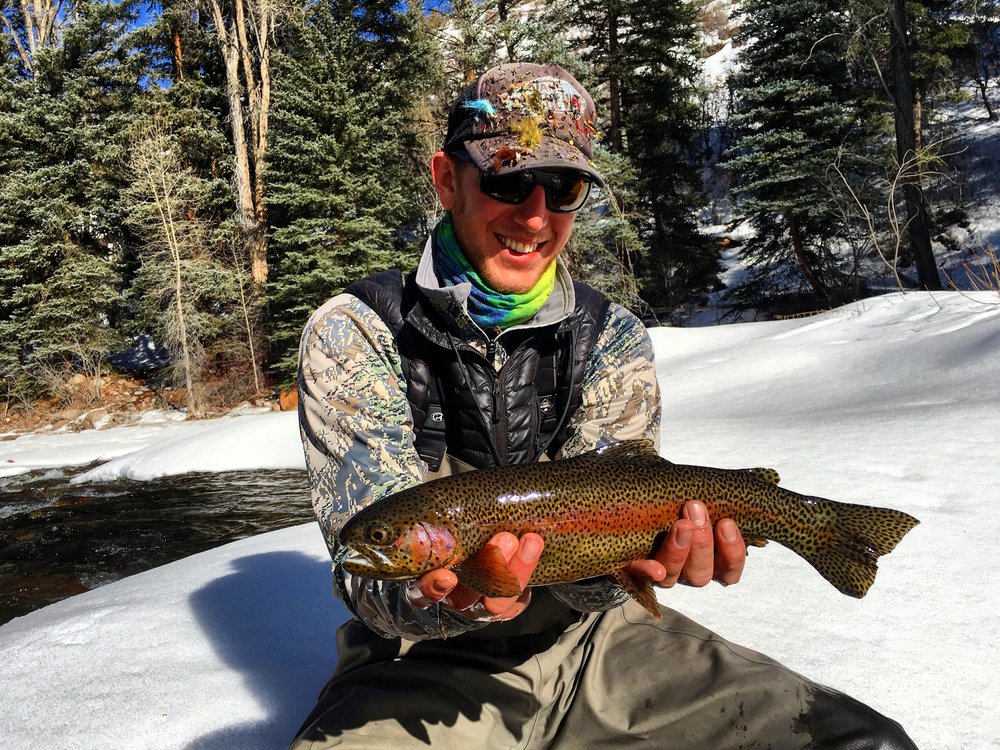
WHEN IS THE BEST SEASON FOR FLY FISHING IN ASPEN, COLORADO?
Unlike other states, it is possible to go fly fishing year-round in Aspen. Each new season brings the opportunity to use different lures and try out new skills.
WINTER FLY FISHING
Winter is the best time of year for tailwater fishing like on the Frying Pan. Midges hatch year-round and are the most numerous in late January into February. There are also fewer anglers during the winter months, so you have less competition for the biggest fish.
SPRING FLY FISHING
Spring fly fishing can be some of the best and some of the worst fishing of the year, depending on when the runoff begins and the water starts to get colored. Blue Winged Olive hatches can be epic during March, April, and May, prior to the runoff. Once the water starts to rise, you may have better luck tailwater fishing, hitting still water lakes, or float fishing.
SUMMER FLY FISHING
Summer is the most popular season for Aspen fly fishing. This time of year, the Roaring Fork Valley experiences excellent hatches of drakes, caddis, pale morning duns, and yellow sallies. Anglers will need to break out their best flies because clear water and high pressure make summer trout very discerning. With more competition on Colorado rivers, you should consider investing in a local guide to help you find the secret fishing spots.
FALL FLY FISHING
After a summer of eating, trout round out their year nice and fat in the fall. This time of year is also when the leaves begin to change, so it is one of the most beautiful times of year for fly fishing. Caddis, stoneflies, midges, and BWOs can hatch during the fall months but keep your eyes out for opportunities to fish streamers and terrestrials for bigger fish during the brown trout spawning season.
4 THINGS TO CONSIDER WHEN PLANNING A TRIP TO ASPEN
- Water Levels – During the spring the water levels are the highest, which is not always the best for beginners. The water is usually the calmest in the fall and winter.
- What is Hatching – Many insects hatch year-round in the Roaring Fork Valley, but some are specific to a certain season. Anglers often time their trips to match their flies to whatever insects are hatching during that season.
- Weather – Most things are more fun when the weather is better, including fly fishing. Anglers often pick a time of year when the weather in the Roaring Fork Valley is the best.
- Accommodations – Aspen is the busiest during the winter and summer. Spring and fall are considered the off-season, so it is easier to find accommodations.
No matter the time of year, Aspen Luxury Concierge can help make your fly fishing experience the best it can be. Contact the ALC team to book beautiful, conveniently located accommodations any time of year.
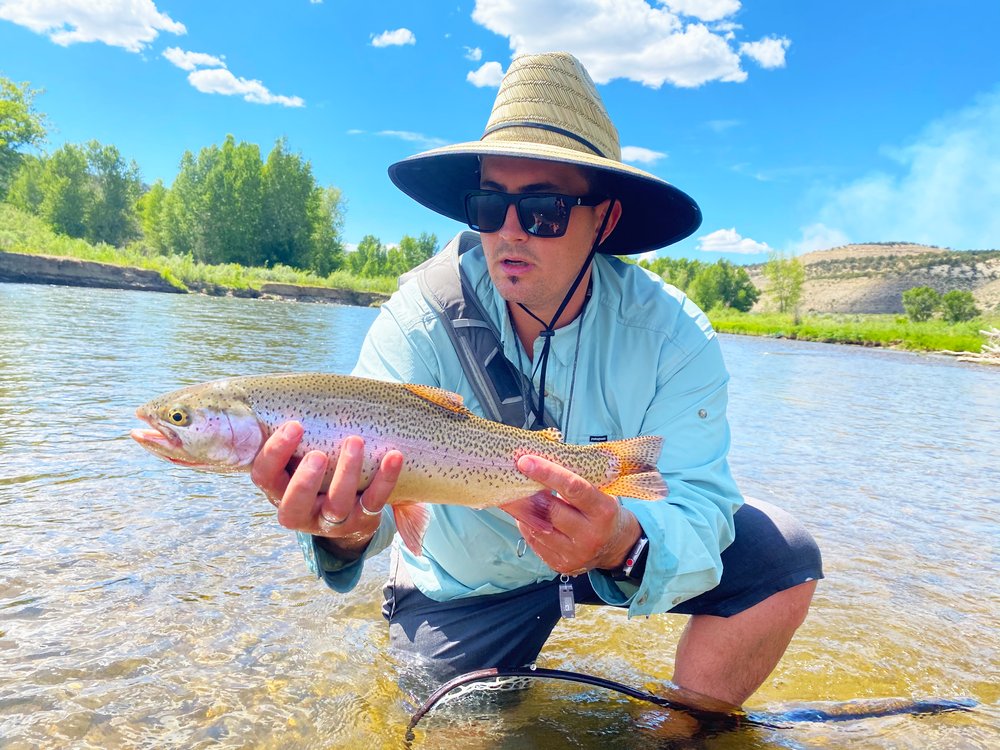
WHERE IS THE BEST FLY FISHING IN ASPEN?
THE ROARING FORK RIVER
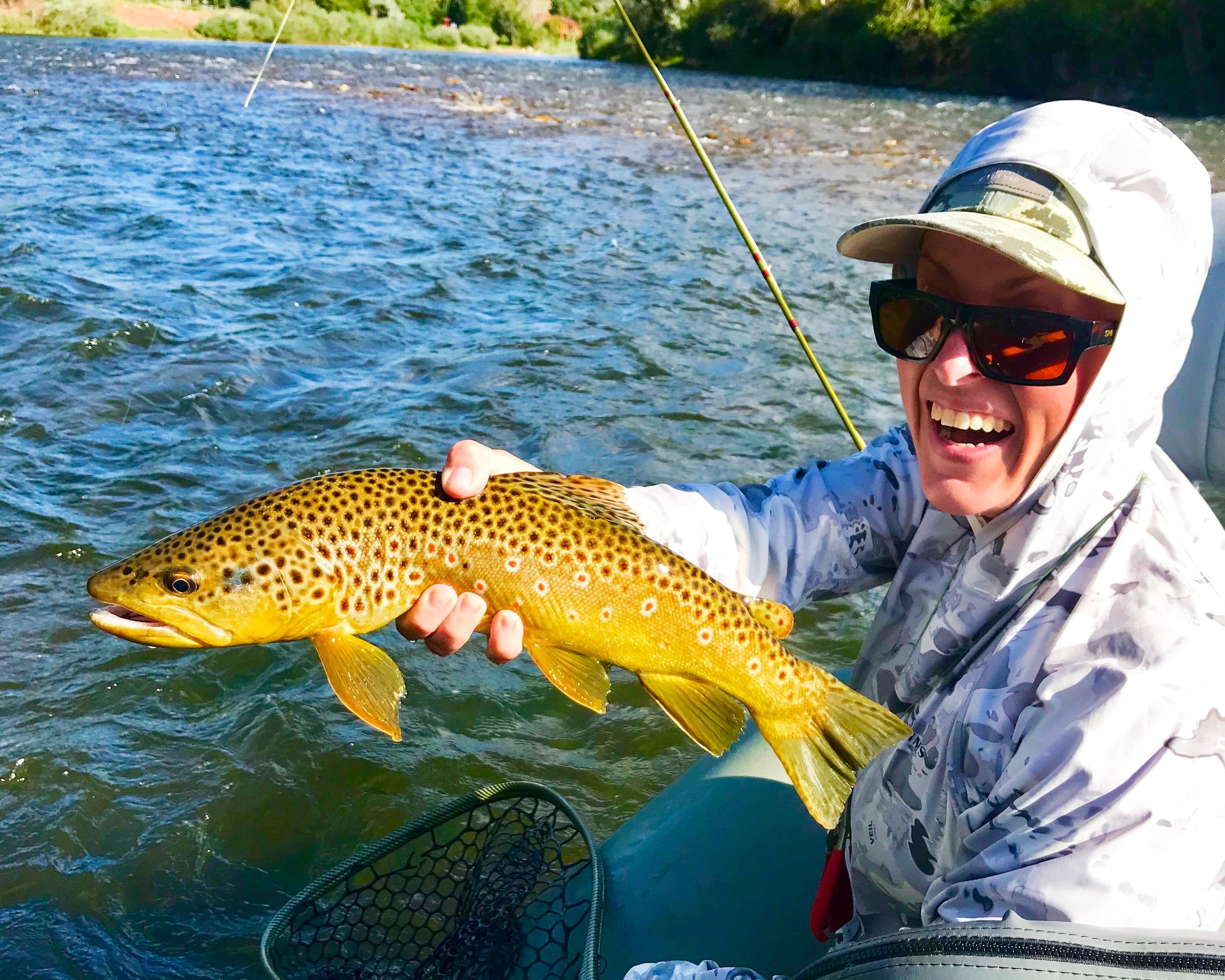
The Fork, as it is known locally, is a Gold Medal river that starts at the top of Independance Pass and falls quickly over 70 miles to it’s confluence with the Colroado in Glenwood Springs. The most upper reaches, from Aspen upstream, features an alpine, small stream fishing experience that offers up opportunities for all four species of trout; browns, rainbows, brooks, and beautiful colorado cutthroat. From Aspen to Woody Creek is some of the best wade fishing in the state, featuring beautiful, cold pocket water and large stretches of public access that hold large, wild rainbow trout. Just below Woody Creek, Snowmass Canyon runs for roughly 10 miles and features steep runs, more pocket water and some of the best hidden spots on the river. Once the river comes out of the canyon, it moves into the Basalt-Carbondale section, where the Frying Pan brings in more water and changes the river into a bigger body of water that can be floated. At Carbondale, the Crystal brings in it’s flow and the majority of fishing is done from a drift boat between Carbondale and Glenwood Springs where you will most likely catch more browns than anywhere else on the river.
FRYING PAN RIVER
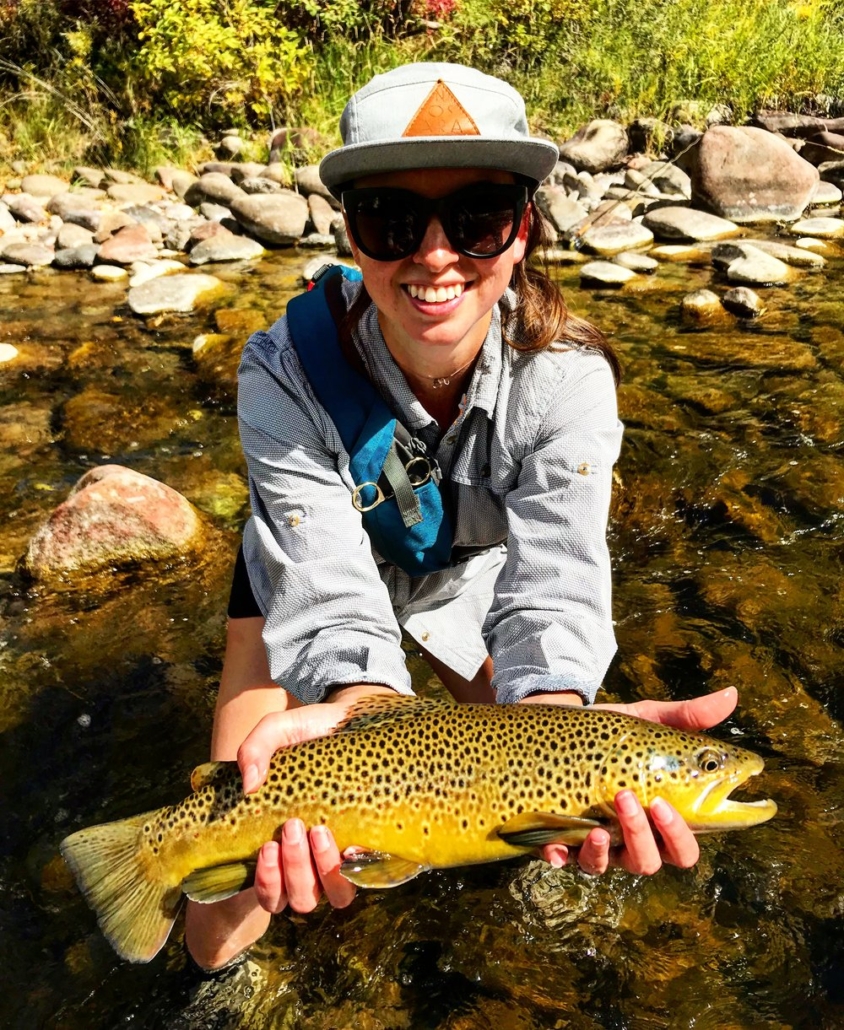
The world famous Pan is a single river that boasts two very different fishing experiences. Above Reudi Resevoir, the Pan is a high alpine, freestone river that can be fished at various points along the majority of its course through public lands. Expect to find brook trout, some brown trout and maybe the occasional cutthroat. The majority of folks who travel to this corner of Colorado to fish the Pan come for the 14 miles of river below Reudi Resevoir, one of the most famous tail water fisheries of the American West. With 9 miles of public access, this stretch offers the technical angler the opportunity to land very large wild trout in a small river environment. Hatches are prolific and feature the full gamut of bugs you would find on any world class Western trout stream. Dry fly fishing can rank in the excellent category in the afternoon and evenings of warm summer days while spring and fall feature prolific BWO hatches. For any diehard fly fisher, the Frying Pan is a bucket list river.
CRYSTAL RIVER
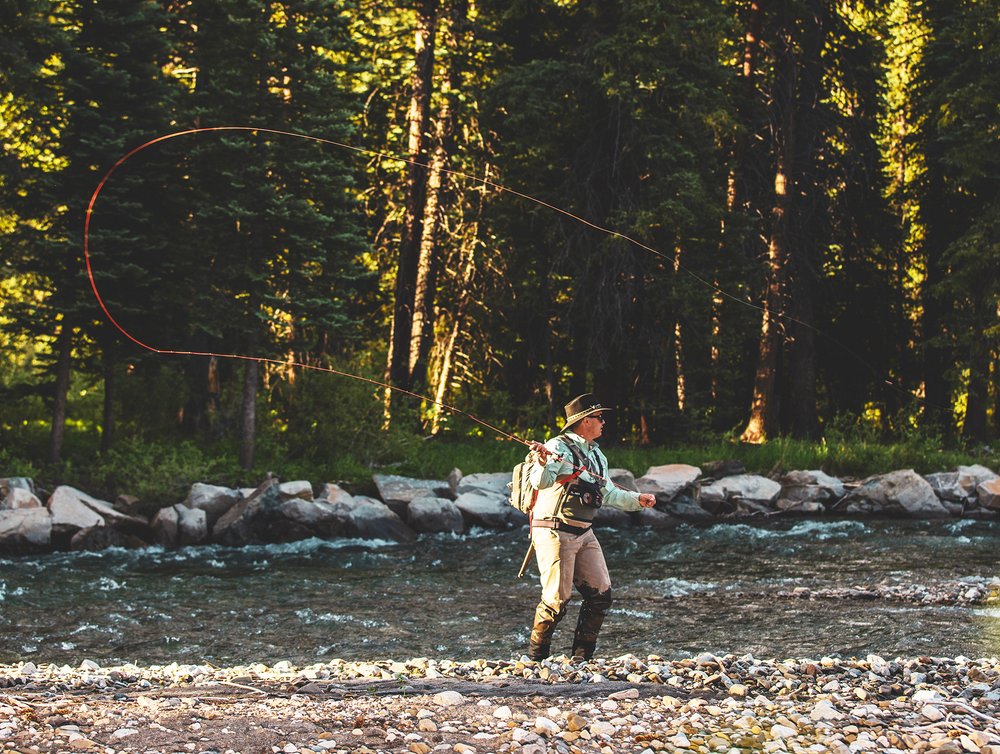
The Crystal River is a beautiful freestone that winds through one of the most beautiful high alpine valleys in Colorado. While it does not feature the prolific hatches of the Fork or the size of the fish in the Pan, the natural beauty of the river makes it worth a visit. Often overlooked by other anglers, it is often less crowded than other spots. Look for stonefly and caddis hatches during the warm months and nymphing with eggs can produce during the spring and fall, when rainbows and then browns come to the Crystal to spawn from the Roaring Fork.
LOWER COLORADO RIVER

The Lower Colorado is a stretch of the mighty river that begins at the top of Glenwood Canyon and runs to Rifle. Glenwood Canyon offers spectacular scenery and great fishing during warm months where you can chase wild brown trout surrounded by the high cliffs of the canyon. Floating is most common throughout the Lower C and many sections offer opportunities for very big fish. While the fish are not as common as some of the other rivers, the size they achieve can be impressive. Watch for summer closures as this section often warms to the point that they close it down for trout safety. The best time to fish is fall, when the levels of the river are the lowest and the biggest of fish are stocking up for a long winter.
HIRE AN ASPEN FLY FISHING GUIDE
Anglers can easily find a few general spot recommendations online, but most locals don’t share their favorite spots to avoid crowds. This is why you should consider hiring a fly fishing guide for your trip. A local guide can take you to the best locations and they may even have the connections to get you onto private land to fish.
ALC knows several highly recommended fly fishing guides who are fantastic teachers and give all new anglers a great experience. Guides will frequently take beginners to spots where they are most likely to catch a fish. Contact Aspen Luxury Concierge to start planning your fly fishing adventure!
WHAT GEAR DO I NEED TO START TO FLY FISHING?
Fly fishing is one of those activities where you will never have too much gear. Aspen anglers are known for investing in the best gear and expanding their kits every season. For beginners, there are 13 basic items that you need for Aspen fly fishing:

- Fly Rod – A 9-foot, 5-weight rod is suitable for most fishing conditions in Aspen.
- Reel – New anglers should invest in a high-quality, well-built reel. The reel balances the rod and retrieves the line.
- Fly Line – Always buy your line new. Brightly colored lines work best. If you have a 5-weight rod, get a 5-weight line.
- Leader – This is a strong, transparent line that you attach to the end of your main fly line. Leaders are always clear, so fish can’t see them.
- Tippet – This connects your fly to your leader. In some conditions, you can tie your fly directly onto your leader. However, a tippet can make your rig last longer and makes the fly move in a more natural way in the water.
- Weights – If you are wet fly fishing instead of dry fly fishing, you will need to weigh down your line to get the fly down to where the fish are feeding.
- Strike Indicators – These float on the surface and their movement lets you know if the fish are feeding.
- Flies – Each fly is meticulously designed to attract a certain fish by mimicking the insects and nymphs that that fish eats.
- Fly Box – As you acquire more flies, you’ll have to keep all your gear organized.
- Waders – Necessary for wading in cold water conditions
- Fly Fishing Vest – Holds all your gear within reach. Plus, a sturdy, well-used vest earns you street cred among other anglers.
- Wading Boots – Some waders have built-in boots or come with boots. Wading boots have spikes to help you get traction in rivers.
- Fishing License – The license fees support fisheries and local preservation efforts.
CHOOSING THE RIGHT OUTFITTER FOR FLY FISHING IN ASPEN, COLORADO
The right outfitter can make all the difference, especially for beginners. This is where hiring a local guide comes in. Your guide can recommend reputable outfitters, who sell high-quality gear. For anyone who loves shopping, Aspen is home to a wide variety of luxury stores. You can go in person to buy gear and new clothes or send your concierge to run those errands for you.
Local guides can also help you assemble a fly kit that is unique to Aspen fishing. Every Aspen angler’s fly kit should have Parachute Adams (18-20) and Green Drakes (12) for dry fishing, Black Woolly Bugger streamers, and an assortment of nymphs. Pheasant Tail, GB Epoxy Stone, Eggs, Copper Johns, and Prince nymphs are best for catching Aspen trout.
While you’re in Aspen, be sure to observe stream etiquette: don’t crowd other anglers, leave no trace, share the water, and don’t fish on the redds.
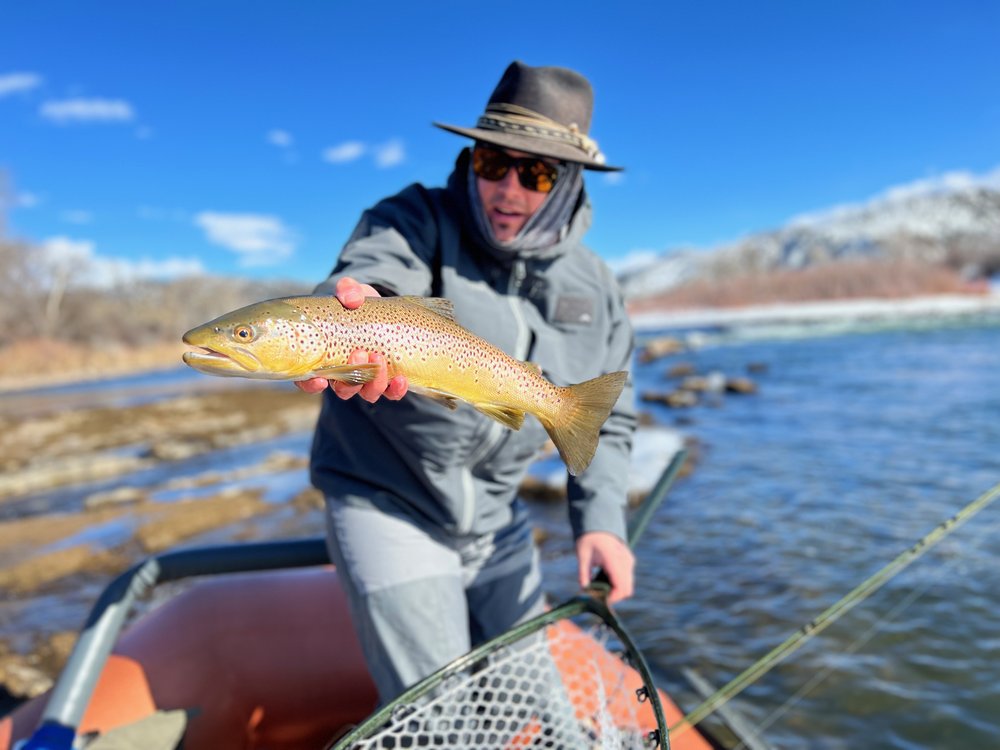
THE BEST FLY FISHING IN ASPEN YEAR-ROUND
Aspen offers a year-round haven for fly fishing enthusiasts of all skill levels, with its Gold Medal waters and abundant fish species. Whether you’re a novice or an experienced angler, Aspen Luxury Concierge is here to make your fly fishing experience truly exceptional.
From arranging luxurious accommodations to connecting you with knowledgeable guides, providing expert gear recommendations, and handling all the logistics, our team is dedicated to ensuring every aspect of your trip is taken care of.
Contact Aspen Luxury Concierge today to begin planning your ultimate fly-fishing adventure in Aspen and immerse yourself in the unmatched beauty of this paradise! We can help with accommodations, hiring guides, personal shopping for new flies, transportation, and more!
Start planning your trip!

 Twitter
Twitter
 LinkedIn
LinkedIn
 Reddit
Reddit
 Tumblr
Tumblr
 Pinterest
Pinterest


